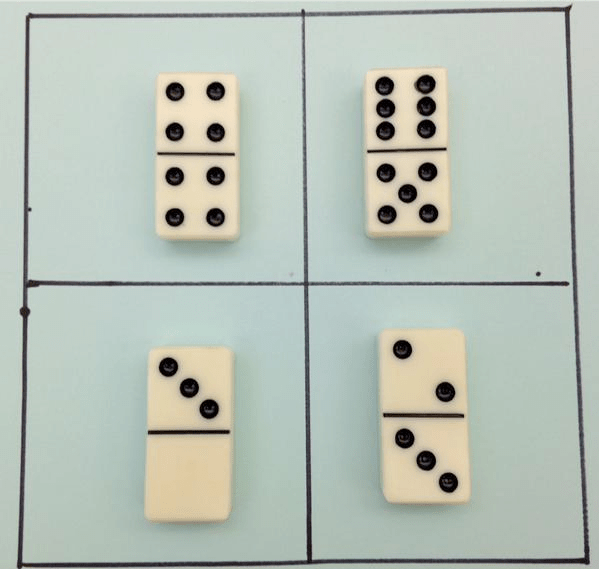How to Number Talk: Which One Doesn’t Belong?
This article is a part of a series called How to Number Talk: Short Ways to Jump Start Your Math Block.
How to Number Talk: Which One Doesn’t Belong?
Which one doesn’t belong (WWDB), is a number talk routine that is short, familiar and easy to introduce. This is why you might have seen a few in your new curriculum, as more and more textbooks are including these as warm-ups.
How to Do it:
Which one doesn’t belong starts with displaying an image on the board, it will consist of a square with four boxes, each with an equation, item or picture. Each of these boxes will have something in common. After giving students a few minutes to think - prompt them to answer the question “Which one doesn’t belong?”
Grab a pencil and let’s try it out:

Image #15 from Which One Doesn’t Belong webpage [Credit: Joe Schwartz]
Take a minute and jot down which one you don’t think belongs - and say why.
Did you figure out which one didn’t belong? Did you think more than one doesn’t belong?
There’s no wrong answer there. More often than not each image in a Which One Doesn’t Belong grid has a reason to not belong!
Questions to Ask:
- What do you notice? What do you wonder? (You can ask this before you as WWDB?)
- How do you know?
- Can you tell me more about your thinking?
- Who agrees?
- Does anyone disagree?
- Can someone explain why ___ is incorrect in a different way?
Links to Standards of Mathematical Practice:
Number talks are great opportunities to link back to those Standards of Mathematical Practice (SMP’s). Here’s the Top 2 SMP’s we think this highlights:
- SMP 3: Construct viable arguments & critique the reasoning of others
Students during WWDB are sharing which they think is “wrong” while others are reasoning with their own perception of which is wrong and right. While there is no true wrong representation, it helps them learn to have these conversations between themselves, and learn to construct a respectful argument.
- SMP 6: Attend to Precision
During their reasoning process, students get to practice their precise math language skills to build their argument and make sure what they’re saying is clear to others.
Where to find them:
- Which One Doesn’t Belong website
- Which One Doesn’t Belong: A Shapes Book, Teachers Guide with Student Workbook by Christopher Danielson
- On Twitter check the tag #MTBoS and #WWDB
Feel free to reach out to chat math with me anytime at ndupre@mtholyoke.edu.
Sign up for twice monthly emails to be notified when our next blog post is live.